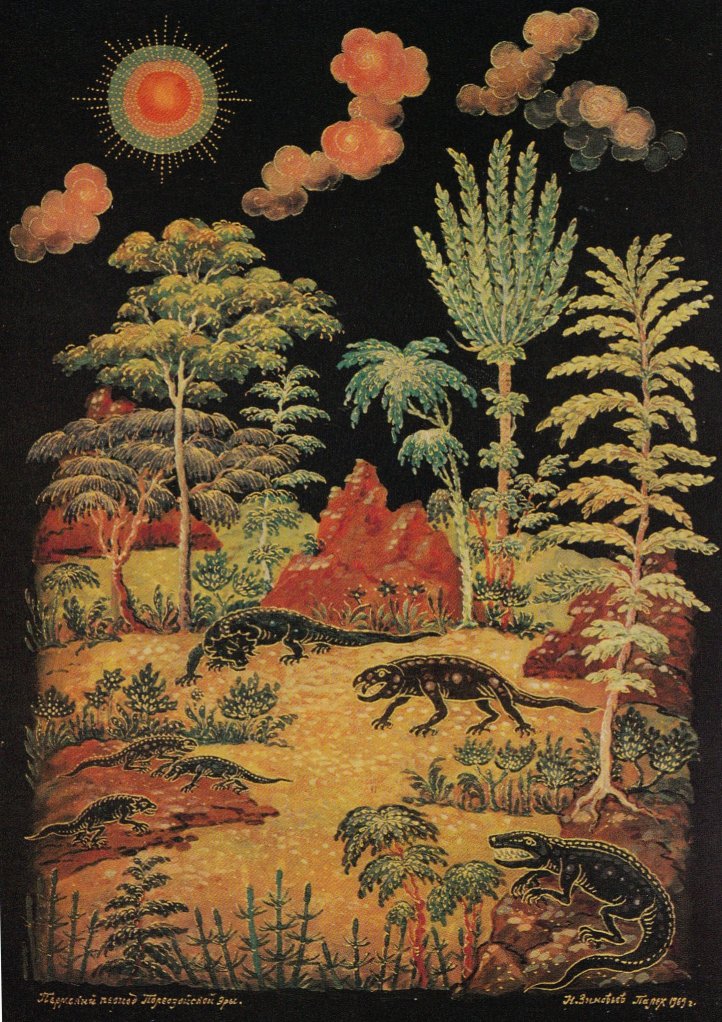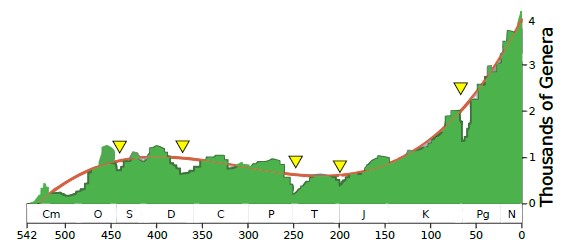1.7: Pangea and Great Extinction
- Page ID
- 49652

At the end of the Carboniferous period, there have been several important events. Firstly, all Earth continents collided in a single continent Pangea. Second, an active mountain-building started; this orogeny formed Urals, Altai, the Caucasus, Atlas, Ardennes. Then part of Pangaea (namely, Australia) “drove” to the South Pole, thus started the Great glaciation. Temperatures on Earth were thus even lower than it is now, in the epoch of Great Cenozoic glaciation.
Interesting is that these processes were not strongly affected the evolution of the biosphere, at least in the beginning. Of course, there are were new types of vegetation, conifer forests, savannas, and deserts. Three ferns declined, cycads (rare now) appeared. However, the fauna has not changed. The role of reptiles increased significantly, many of them were insectivorous, and some reptiles (synapsids) started to acquire characters of the future mammals. Amphibian stegocephalians have still thrived. Higher insects (insects with metamorphosis) were close to modern Hymenoptera and lived on conifers, and they played an essential role in the further evolution of the seed. In a forest, litter lived multiple herbivorous and predatory cockroach-like insects.
Reptile metabolism is entirely compatible with water life, so in Permian, some reptilian groups “returned” to water (this process continued in Mesozoic): there were marine, fish-eating mesosaurs, and freshwater hippo-like pareiasaurs.
At the end of the Permian period, about 270 million years ago, glaciation stopped. However, orogeny intensified, half of Siberiawere covered with volcanic lava (famous Siberian Traps). That event probably was the reason for the great extinction of marine life: trilobites did not survive Permian, as well as 40% of cephalopods, 50% echinoderms, 90% brachiopods, and bryozoans, almost all corals and so on. More or less happily escaped were only sponges and bivalvians. However, some groups appeared first at this time, for example, contemporary bony fishes and decapod crustaceans.



